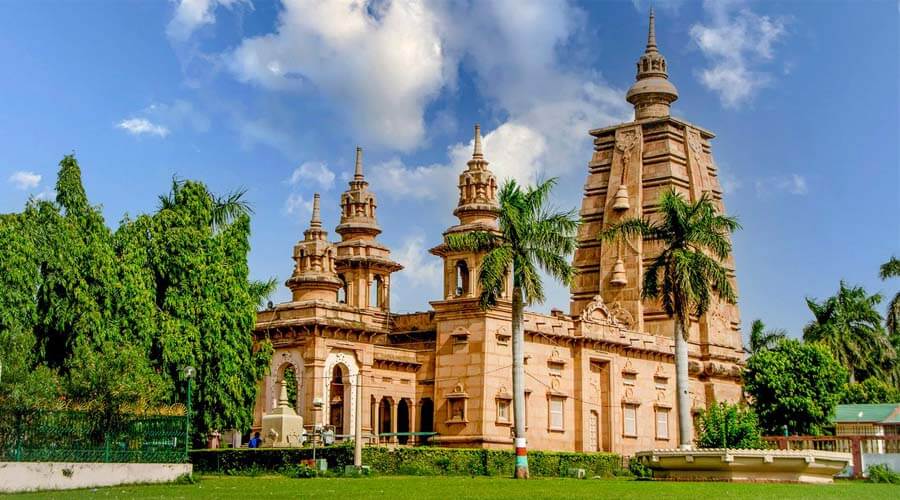The Modhera Sun Temple, located in the village of Modhera in Gujarat, India, stands as an extraordinary example of 11th-century Indian temple architecture dedicated to the solar deity Surya. Built around 1026-27 CE during the reign of King Bhima I of the Solanki (also called Chaulukya) dynasty, this temple embodies the artistic brilliance, architectural innovation, and spiritual significance of the period. Though the temple is no longer an active place of worship, its well-preserved remains continue to captivate historians, architects, and visitors seeking to experience its celestial beauty and historic grandeur.
Historical Background
The history of the Modhera Sun Temple is intertwined with the legends and the vibrant cultural fabric of the early medieval era in western India. King Bhima I, a ruler from the Solanki dynasty, commissioned the temple during a period marked by political strife and artistic flowering. The Solankis were devoted followers of the Sun God (Surya), the source of life and energy, and this temple was built to honor that divine presence.
Local legends and ancient Hindu scriptures such as the Skanda Purana and Brahma Purana connect the site of Modhera to the epic Ramayana, suggesting the area was once part of the Dharmaranya forest where Lord Rama performed a sacred yagna (fire sacrifice) to absolve sins after the war in Lanka. This association lends the site deep spiritual importance, further amplified by the temple’s celestial alignments.
Architectural Design and Layout
The temple complex is a masterpiece of Maru-Gurjara architecture (also known as Solanki style), characterized by intricate craftsmanship, ornate carvings, and precise geometric planning. The Modhera Sun Temple is divided into three essential parts aligned on a single axis running east to west, reflecting the journey of the sun across the sky.
- Surya Kund (Temple Tank): In front of the temple lies a large stepped tank (kund) used for ritual purification. It is rectangular and surrounded by 108 small shrines, symbolizing different gods and divine energies, and reflects advanced water engineering of the time.
- Sabha Mandapa (Assembly Hall): The assembly hall or the dance hall is an open pavilion supported by exquisitely carved pillars. The pillars feature sculptures of musicians, dancers, deities, and floral motifs, all crafted with meticulous attention to detail. This hall was used for gatherings, cultural performances, and devotional dances dedicated to Surya.
- Gudhamandapa (Sanctum Sanctorum): The innermost shrine or sanctum housed the idol of Surya, the Sun God. The temple is precisely positioned so that during the equinoxes, the first rays of the rising sun illuminate the sanctum and the idol, creating a spiritually powerful spectacle. Unfortunately, the original idol is no longer present, but the sanctity and architectural brilliance remain visible.
The temple walls and pillars are adorned with intricate carvings, including depictions of gods, celestial beings, mythical animals, and scenes from Hindu mythology. Noteworthy is the sculptural detail on the ceilings and doorframes, showcasing floral patterns and motifs symbolizing fertility, life, and cosmic energy.
Astronomical Significance
One of the most remarkable features of the Modhera Sun Temple is its astronomical alignment. Constructed near the Tropic of Cancer at approximately 23.6 degrees latitude, the temple was designed with profound knowledge of solar movements. On the days of the equinoxes (around March 21 and September 23), the sun’s rays perfectly enter the temple’s sanctum, illuminating the place where the idol stood.
This precision underscores the advanced scientific understanding possessed by the temple’s architects and builders. It reflects not just spiritual symbolism but an integration of astronomy and temple architecture, making the temple a unique synthesis of faith and science.
Cultural and Artistic Legacy
The Modhera Sun Temple is a pinnacle of Maru-Gurjara art, renowned for its elegant ornamentation and clarity of form. The detailed sculptures display a mastery of stone carving, elevating the temple to an artistic icon of Gujarat’s rich cultural heritage.
Moreover, the temple complex often hosts festivals, especially dance festivals such as the Uttarardha Mahotsav, celebrating Indian classical arts in the same space where ancient performances might once have taken place. This living tradition bridges history with modern cultural expression.
Though it suffered damage from invasions and natural wear over centuries, the temple remains a protected monument under the Archaeological Survey of India. Conservation efforts have preserved much of its beauty and helped promote its recognition as a National Monument of importance.
Modern-Day Significance
Today, the Modhera Sun Temple attracts tourists, historians, and spiritual seekers from India and abroad. It offers a peaceful retreat with its serene surroundings on the banks of the Pushpavati River. Visitors often come during equinoxes to witness the spectacular solar phenomenon heralded by ancient brilliance.
The temple stands as a testament to the Solanki dynasty’s legacy, showcasing India’s medieval architectural, scientific, and spiritual achievements. Its continued preservation and celebration maintain this heritage for future generations, inspiring pride and wonder across time.
Conclusion
The Modhera Sun Temple is not only a temple but a radiant symbol of ancient India’s synthesis of art, astronomy, and religion. With its perfect blend of scientific precision and artistic brilliance, it continues to fascinate and enchant those who visit. This 11th-century marvel reminds the world of Gujarat’s rich history and the timeless quest for harmony between the cosmos and human devotion.

